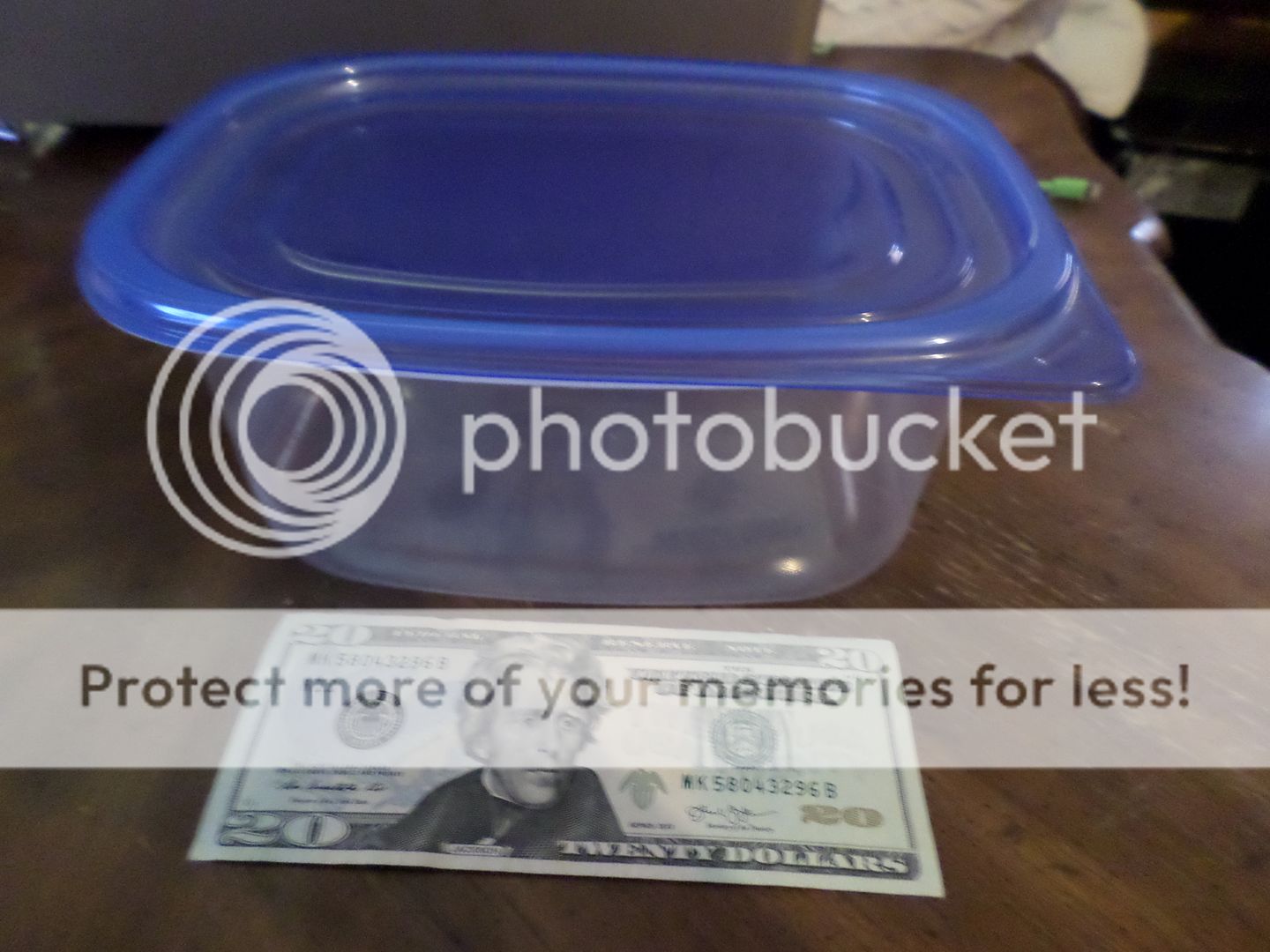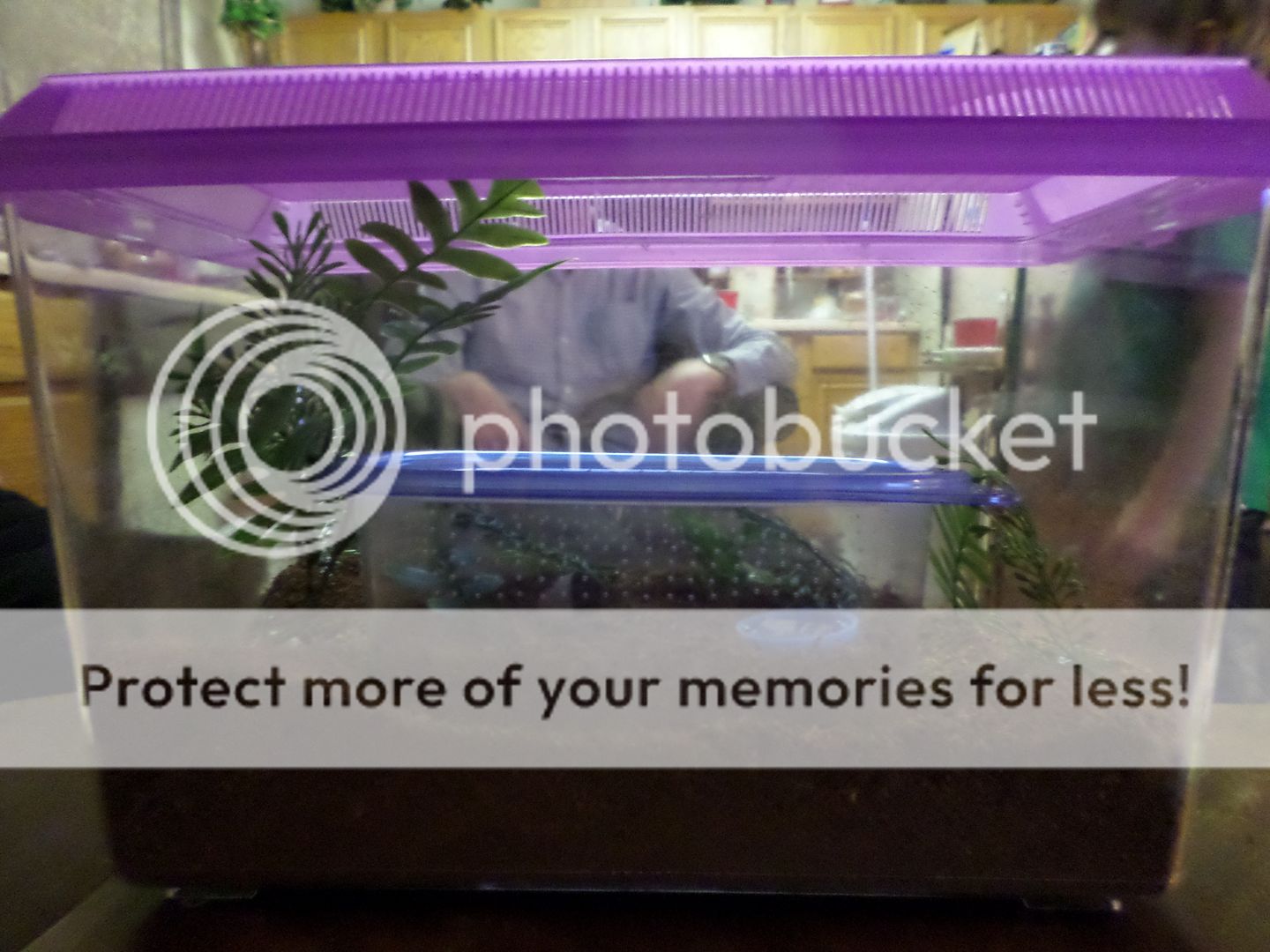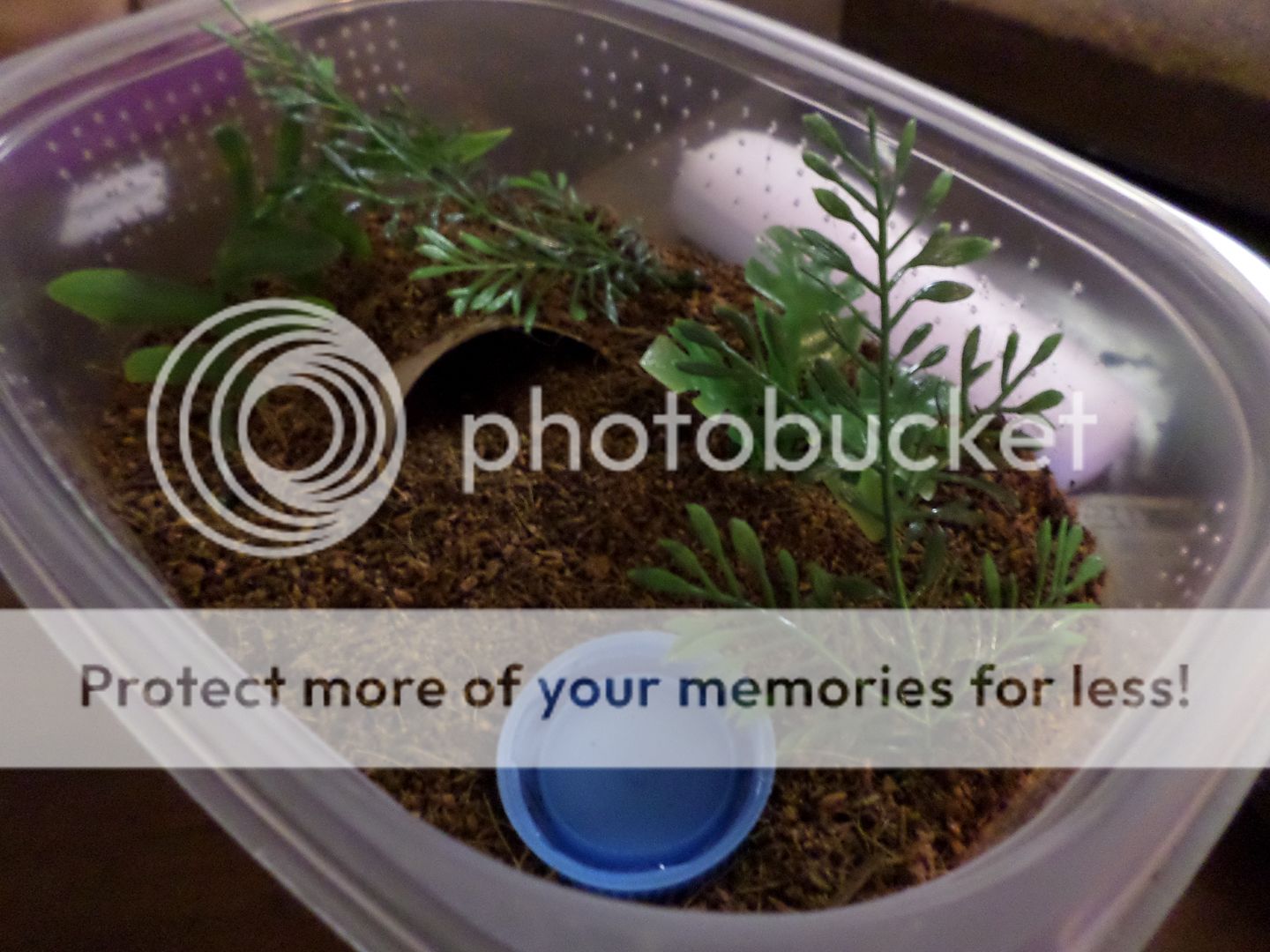I am hoping someone can point me in the right direction here. I have no experience with baby tarantulas so I am interested in finding out what differences, if any, there are in care and feeding schedule for babies as opposed to adults. He is extremely small and is a wild spider so I am not sure what feeding schedule to have him on. He has not had a very enthusiastic feeding response, though it would appear he ate because the pinhead cricket I put in the enclosure is gone and there was a cricket leg lying in the corner. I read somewhere that small enough spiders should be fed 2-3 times per week. Is that true, and if so is he small enough to need that? Any help would be greatly appreciated, I just want this little one to recover and thrive. 
(Disclaimer: I am not advocating handling, but in this case it was the only way to get a shot of him/her due to the size so I hope this is acceptable. In the second photo we had just removed him from the floor after finding him, the final shot of the enclosure should illustrate just how hard it is to take a photo in the enclosure, the camera just can't focus in close enough.)
This is a shot of him tonight, illustrating the normal body posture and overall size.
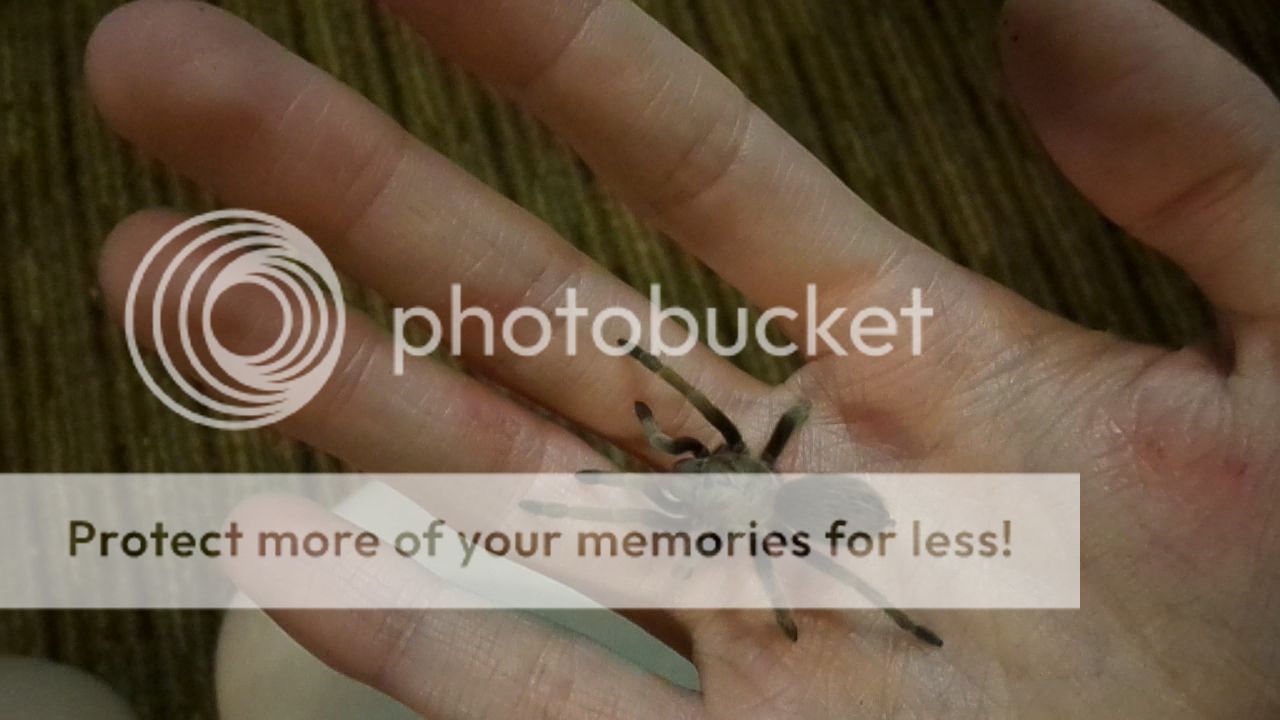
This is the picture of him on the night we found him showing signs of dehydration and missing two legs. He was placed into an ICU after this for a day which seemed to help.
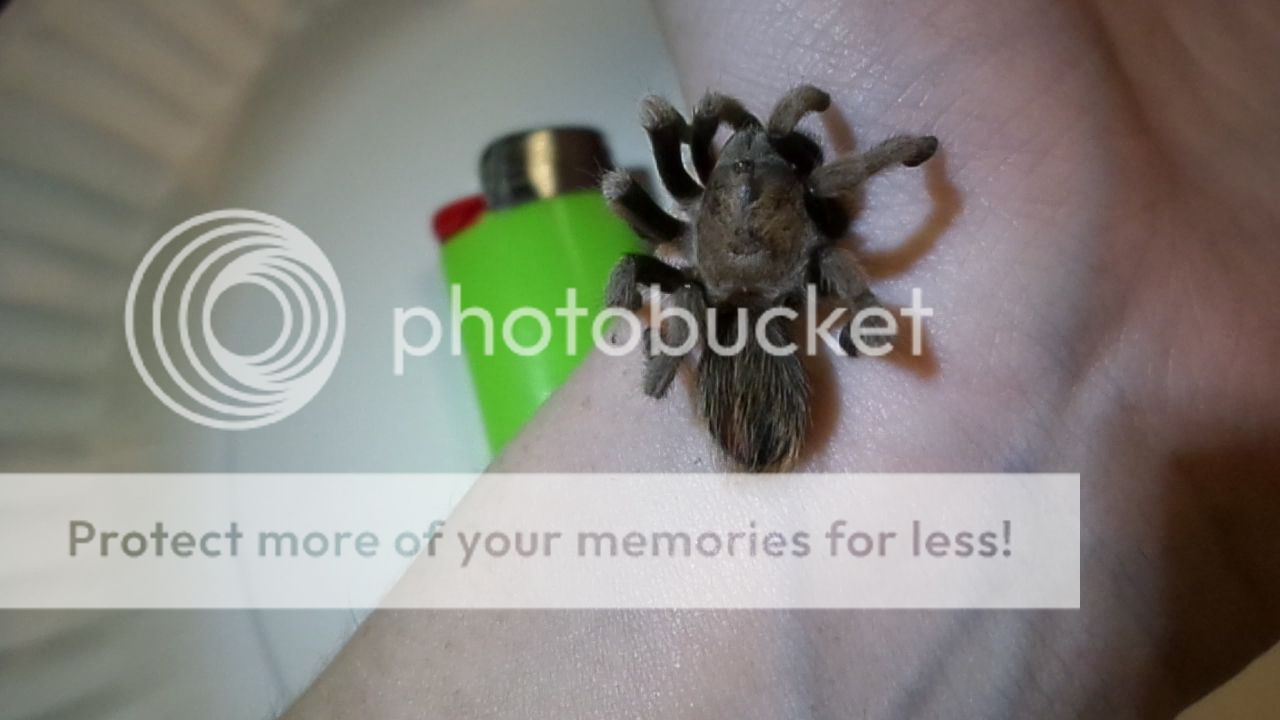
This is a shot of him in his current enclosure.
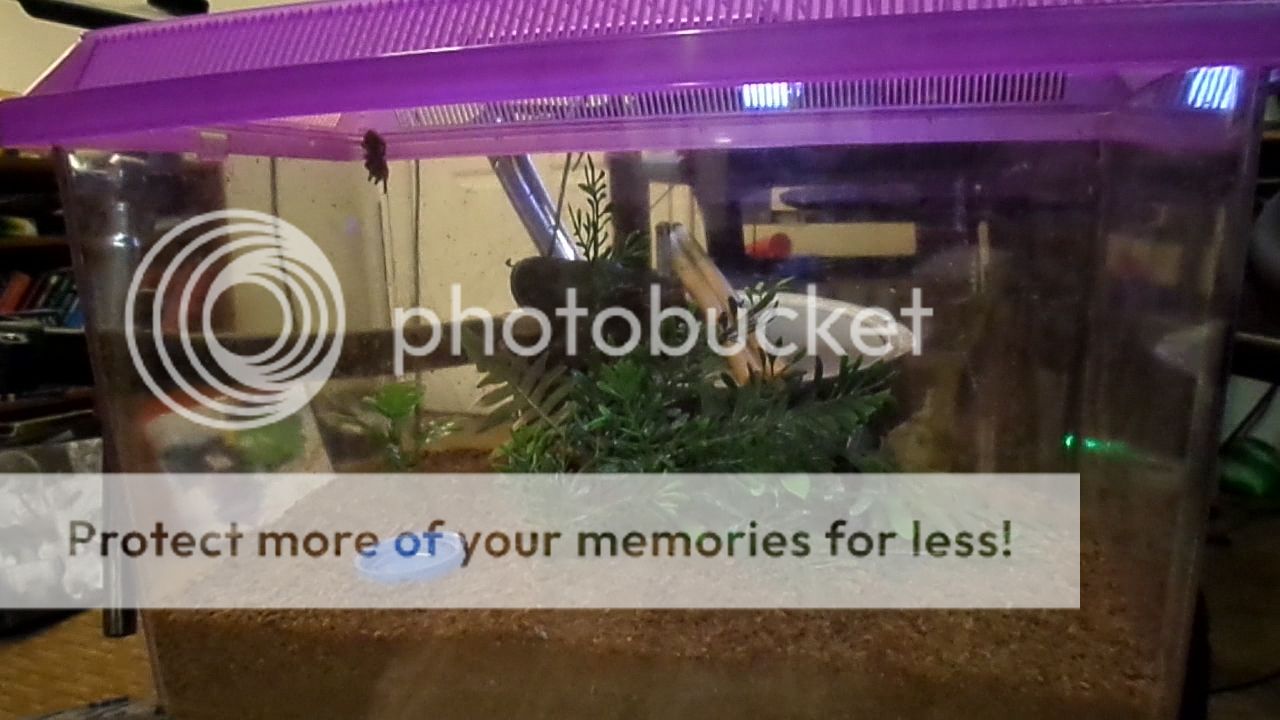
(Disclaimer: I am not advocating handling, but in this case it was the only way to get a shot of him/her due to the size so I hope this is acceptable. In the second photo we had just removed him from the floor after finding him, the final shot of the enclosure should illustrate just how hard it is to take a photo in the enclosure, the camera just can't focus in close enough.)
This is a shot of him tonight, illustrating the normal body posture and overall size.

This is the picture of him on the night we found him showing signs of dehydration and missing two legs. He was placed into an ICU after this for a day which seemed to help.

This is a shot of him in his current enclosure.

Last edited:
